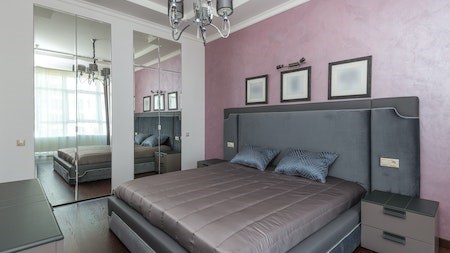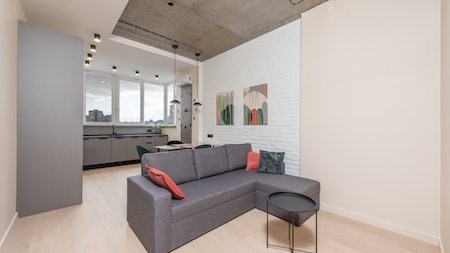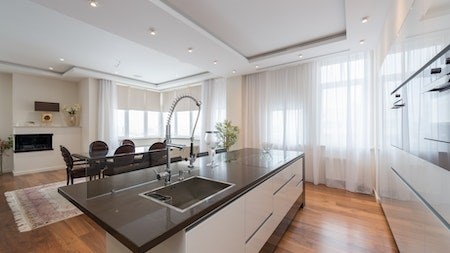Taking on a boarder/lodger may be a way to earn some extra cash or help pay off a mortgage. Before you make the final decision, however, it is important to consider a number of different elements to ensure you can charge the best rental possible and get the best tenant.
The room
If you have made the decision to rent out a room, you need to look at the space objectively. Pay close attention to details in the room available for rent and whether it has unique characteristics, such as its own separate entrance or sliding door. It is also worth doing a deep clean of all surfaces, including any windows and frames. Once cleaned, decide if the room needs painting. A white or neutral tone is recommended, as it provides a backdrop for any soft furnishings the future tenant may introduce, such as personal preference linen and cushions.
It is also far better to empty a room before embarking on any cleaning or fixing because you can see the space objectively.
To furnish or not?
This is a personal choice, but research informs that renting out a furnished room is far easier. However, this is more complex than furnishing a bedroom in your home because other considerations come into play depending on the type of tenant you hope to attract.
The first items to place are the larger pieces of furniture, such as a bed and any wardrobe. In an empty room, you can experiment to find the best positioning, taking into account door openings and easy manoeuvrability. Often bed positioning is determined by the plug point in the room, but this doesn't have to be so if you can safely fit extension cabling. If there is little space for a desk, consider a fold-down table top that clips to a wall space. Also, consider fitting a plug point with a USB port, which allows for the charging of electronic devices.
A television or not? If you have it in your budget, fixing it to the wall opposite the bed is a good idea. The tenant can then relax in bed, watching the television without needing a comfortable chair. It is important to include a chair in the room, however, and one that can easily be moved from a desk to elsewhere.
Linen and curtaining choices should be neutral, regardless of whether you seek a male or female tenant. Consider tones like cream and beige or botanical greens as highlights. Also, make sure you have at least a second set of bed linen available. Art should not be offensive, religious or overtly dominant. Similarly, carpets should be tonal but in a darker shade than the main theme so they don't become dirty too quickly.
Once the room is ready, note all the items in the room and their condition. This will prove important, as noted further in this article.
What to charge?
This is going to depend on many factors. For example, does the room have its own entrance to the garden or a small private patio, or is it only accessible from inside the property? What are the add-on features, such as a microwave, kettle or television, walk-in wardrobe, private bathroom, or own parking garage?
There are numerous ways to calculate a good rental. One is based on the room's measurement, which can be reduced to a percentage of how much space it occupies in your house. That percentage can then be applied to the amount outstanding on your home loan, but ultimately it is going to depend on what the occupier receives in return.
For example, would the tenant have access to other rooms in your home, such as the kitchen, bathroom or lounge? Is the tenant allowed to use, on request, patio and braai spaces for entertaining their own guests?
Another solution is to check out student rental sites. There are dedicated websites where renters and landlords can advertise their needs. This will give you a good idea of the charges based on the type of facilities.
Don't forget to factor in a percentage of the power and electricity consumption of the tenant and whether or not they have access to television services that you subscribe to.
Deciding on the type of tenant
Choosing the right tenant that will fit into your lifestyle is crucial. Tenants, regardless of whom they are, will change some dynamics in your home, but you want those changes to be as few as possible. For example, if you work from home and require quiet during the day, you might prefer a tenant who works from an office or attends college/varsity during the daylight hours.
What time you go to bed generally is important to the type of tenancy you are offering; you will likely not want a tenant arriving home every night at 10pm introducing noises that will wake you.
Generally, the type of people seeking a room are students, young professionals, and the elderly. Do some research on the needs of these different groups so that you clearly understand how their lifestyles may impact your own living environment.
The rules
You must be clear on what rules you wish the tenant to abide by. This can be a long list but bear in mind that the stricter the rules, the less attractive your room-to-rent will be. Rules will include noise levels, privacy, what areas in the home are open for use by the tenant, how the room is to be kept clean (by providing housekeeping or at the tenant's hand), sober or lifestyle habits, number of visitors, the day rental should be paid and consequences of not paying on time, add-on services such as laundry or ironing, an inspection of room on a regular basis, and so on.
Contract or not?
While there is no legal requirement to formalise a room rental with a contract, it is always better to do so because it clarifies what the lodger can expect and the monthly rental agreement.
Another very important aspect of formalising the arrangement in writing is that it gives you a point of reference should the lodger not abide by your wishes and rules. It should include the amount of rental agreed to, the due date, and terms around a deposit should you decide to charge one. A list of rules should be included so there is clarity on expectations. Also, note the terms of occupancy and the agreement around ending the contract by either party. And don't forget to include what items in the room are the owners, including fixed items, decor and soft furnishings.
A room rental may prove to be a financial lifesaver for a property owner residing on their property. However, note that regardless of how you try to limit any impact, your privacy will likely be somewhat impacted. The warning is to manage the relationship by clearly setting boundaries and doing as many checks as possible about the tenant by asking for references regarding their character and lifestyle habits. Be very clear when you advertise about what type of tenant you want, and use your intuition. If it doesn't feel right, it probably won't work in your favour in the long run.
Writer: Kerry Dimmer




